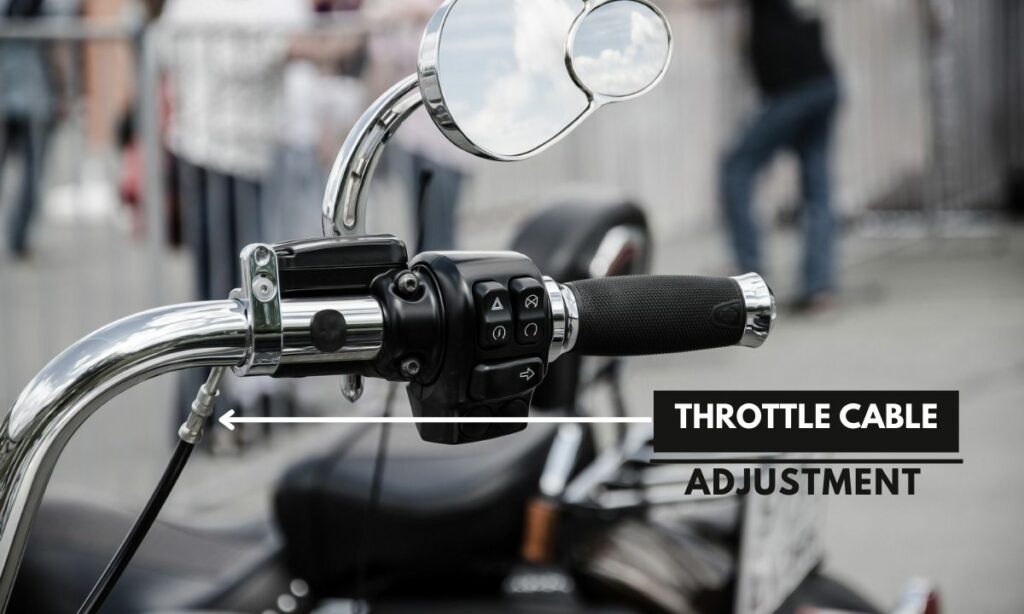Too much clack or too little free play – either is a problem with the throttle cable. Both need to be adjusted on your motorcycle.
If not, there can be poor pickup, rpm rising, or poor acceleration problems in your motorcycle.
So how do you adjust the motorcycle throttle cable?
Here are the simple steps:
- Locate the locknut on the throttle cable
- Slide the protective cover
- Tighten the locknut with a spanner
- Leave a slack of 2-3mm
- The throttle cable is adjusted
That’s the gist.
Well, there are some nuances and details to it. But the above steps broadly cover everything.
As for the details, here is a step-by-step guide.
Steps for throttle cable adjustment
Let’s dive into this step-by-step. Starting with the prerequisites.
Prerequisites
Not many tools are required to adjust the throttle cable in your motorcycle.
All you need is an open-end spanner or wrench.
The required spanner measurement varies depending on your motorcycle model. But a 5/16 inch (8mm) spanner is the most used for throttle adjustment.
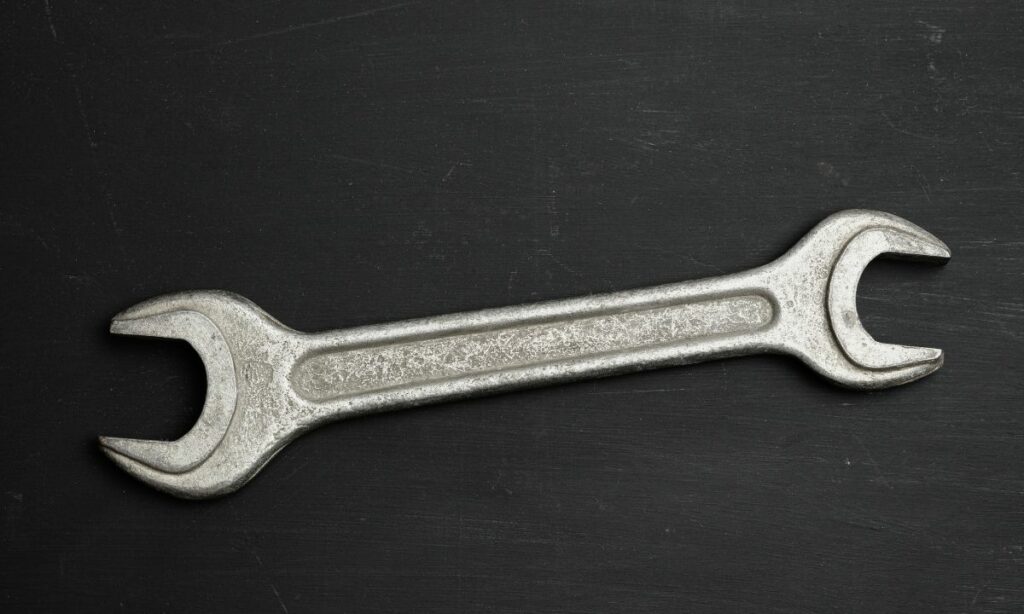
That’s it. That’s all you need.
Apart from your motorcycle of course. And a flat surface to park.
Step 1: Park the motorcycle on center stand
Take your motorcycle on a flat surface first.
If you are doing this in your garage, great! But if outside, make sure the ground is flat.
Next, place the motorcycle on the center stand.
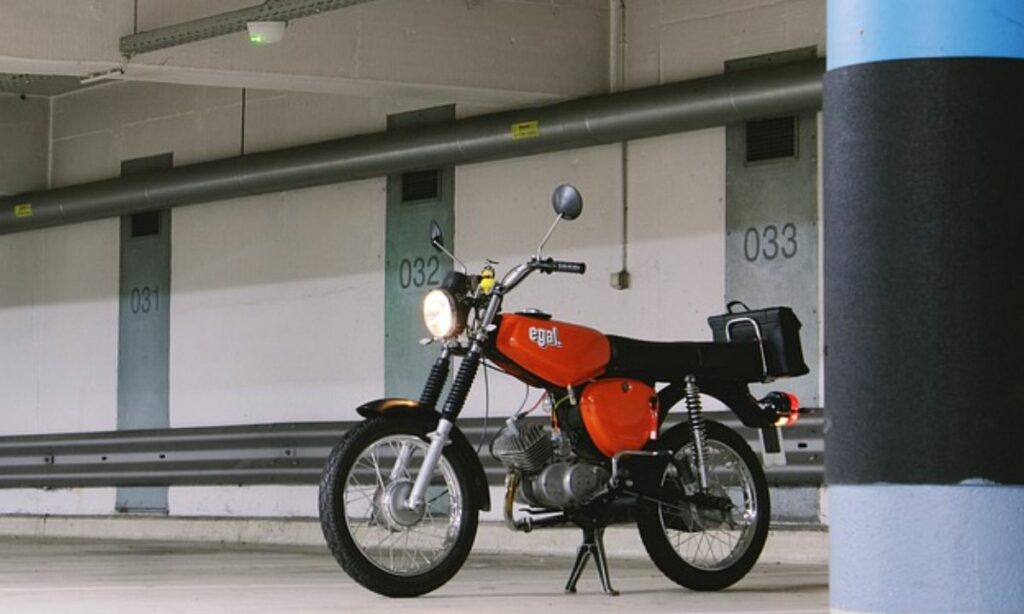
The paddock stand works too. But not the side stand.
On a side note, here is when you need to place your motorcycle on the center stand vs the side stand.
Step 2: Inspect the throttle play
First things first. The throttle free-play must be precise.
The throttle is one of the main components you rely on too much as a rider. It is your only accessory to accelerate and decelerate the motorcycle.
So, the free-play should be on point.
Most manufacturers recommend a throttle free-play of 2 to 3 mm.
But what ends up happening is the throttle over time will gain slack and have more free play.
Is more free play in throttle a bad thing?
Yes. Too much free play on the throttle is bad. You will not be able to accelerate or decelerate smoothly.
What happens is, there is a delay between when you twist the throttle and the carburetor and throttle bodies begin to open. All because of that extra free play.
Enough with the why. Let’s focus on how.
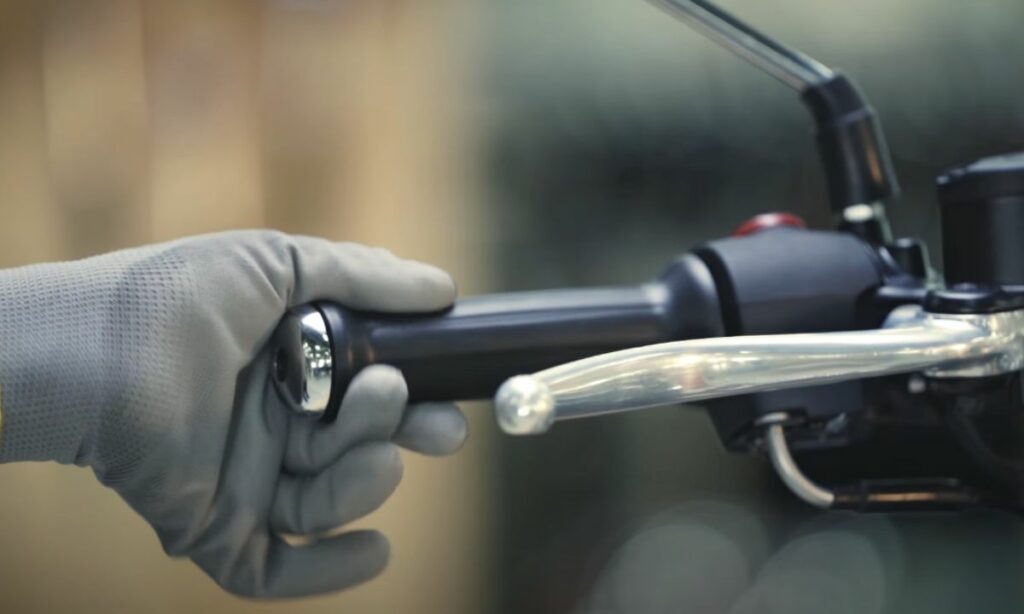
How to inspect the throttle play?
To check the free-play:
- Roll the throttle forward until it stops. You can no more roll forward.
- Now, gently roll back the throttle until you feel the tension. (Only when the tension starts in the throttle cable, will there be acceleration/deceleration.)
- The distance from the stop position to the tension position is the throttle free-play.
- You can also make use of the parting line and the horizontal grip lines on the throttle to measure the free-play easily.
Now that you checked the free-play, it’s time to adjust it.
Step 3: Locate the locknut in the cable
This is a walk in the park.
Locate the locknut on the throttle cable.
You can easily identify from the locknut’s protective cover on the throttle cable.
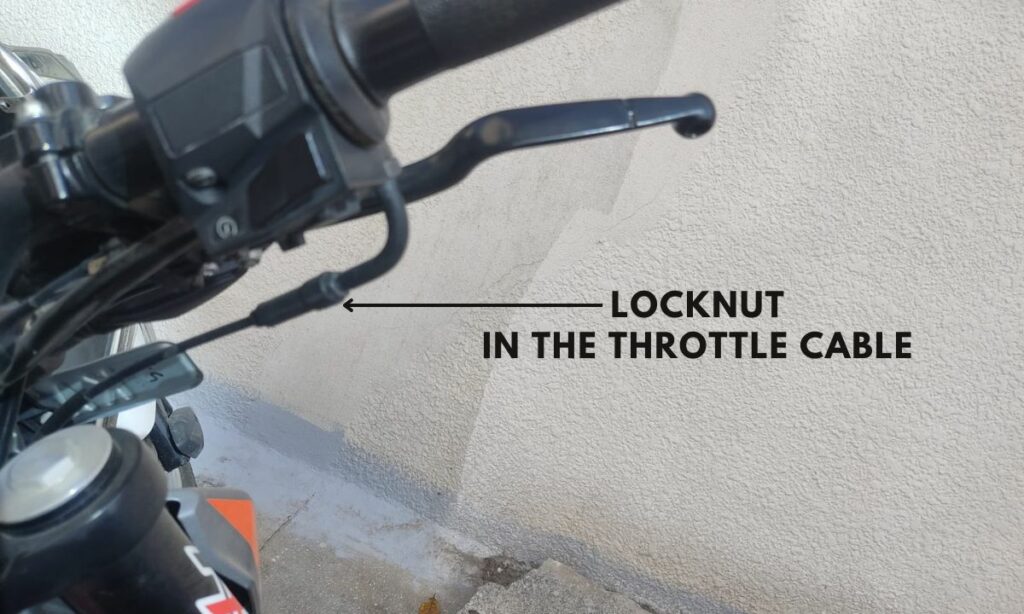
The smooth throttle cable will have a slight bump where the locknut and its cover are present.
And most of the time, the locknut is very nearby to the throttle itself.
Step 4: Slide the protective cover
Once you have found the locknut and its cover, it’s time to slide the protective cover off.
The protective cover comes off the locknut pretty easily if you apply a small amount of force.
So, slide the protective cover gently.
That should suffice to move it along the throttle cable. And make the locknut visible.
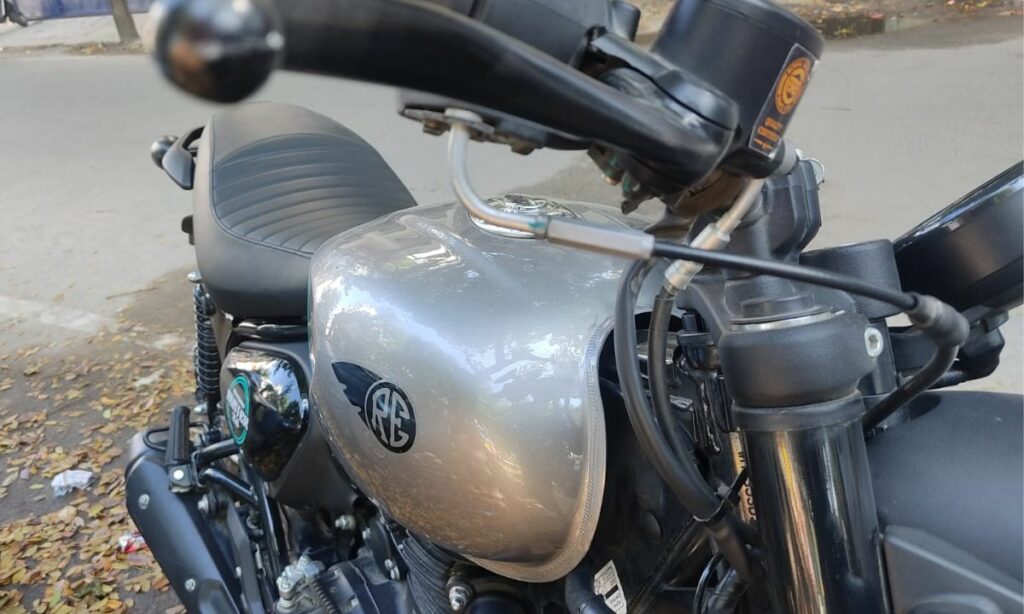
Once you have the entire locknut visible, its time to adjust the throttle cable.
Step 5: Adjust the throttle cable
Take out the spanner now.
An 8mm spanner or a 5/16 inch one is the most used one. If not, check the suitable spanner for your motorcycle throttle cable.
Now, all we need to do is tighten the locknut.
Use the spanner to tighten the locknut. A small tightening is enough.
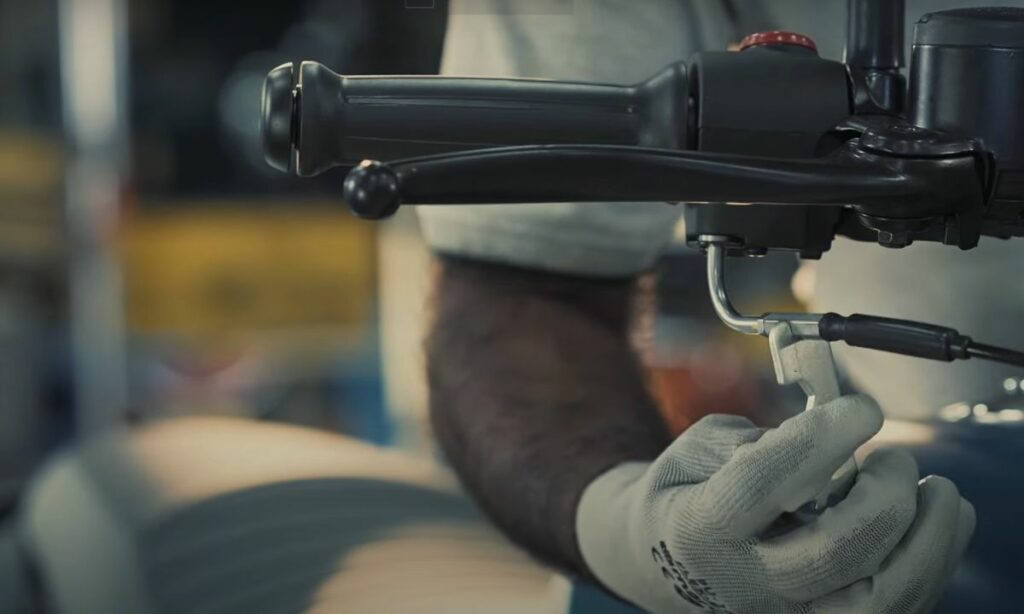
Then check the slack in the throttle. Is the free-play good?
You don’t want excess free-play. But at the same time, you don’t want zero free-play too. A 2 to 3 mm throttle free-play is what we are aiming for.
So, tighten the locknut, check the throttle free-play, and adjust accordingly.
You might have to go for a few iterations. Only then you will end up with an optimum free play for your liking.
Step 6: Wrapping up
Once you are happy with the throttle free-play, it’s time to wrap up and test.
Slide the locknut’s protective cover back first.
Next, test out the throttle without starting the engine. Roll the throttle up and then down. Make sure you feel the tension pretty early in the rolling.
Lastly, idle the engine. The motorcycle should still be on the center stand. Put the bike on neutral gear. Start the engine.
Now, try rolling the throttle again. Feel the acceleration as you feed into the throttle.
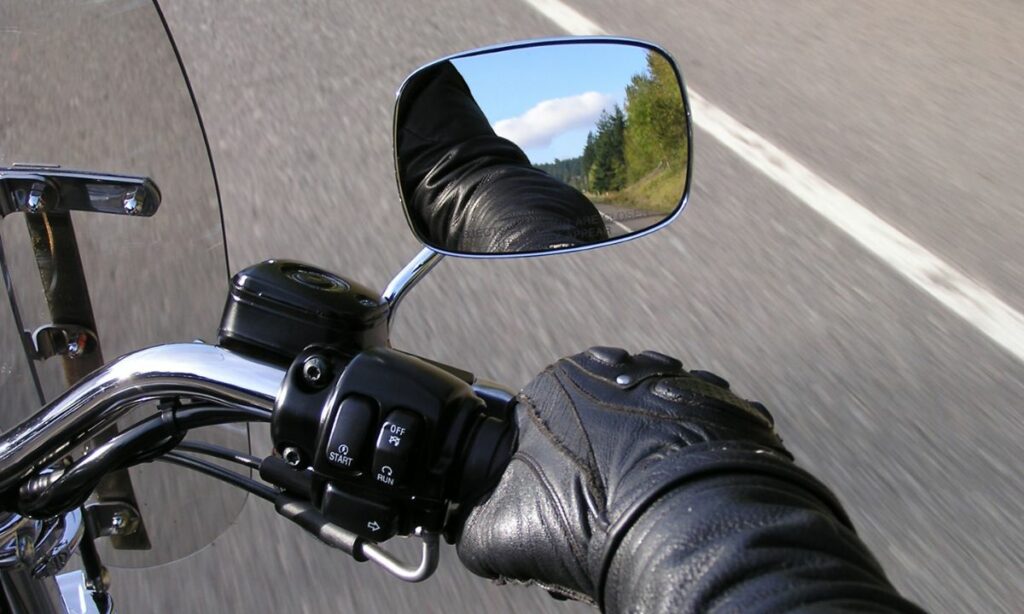
Is the throttle handling feels good? Great.
If it feels too tight or still too slack, you might have to redo the tightening again.
Else, time to wrap up. Take your motorcycle for a ride.
Do’s and Dont’s
- Park the motorcycle on a flat and hard surface.
- Do not overtighten the throttle cable.
- Maintain a minimum slack of 2 to 3 mm ideally. And a bit more depending on the rider’s comfort.
- Place the protective cover back on the throttle cable’s locknut. It is an easy thing to forget.
- Test the final slack on the throttle with an idle engine first. Only when things seem right, go for a test ride.
What if there are two throttle cables
Some motorcycles have two throttle cables.
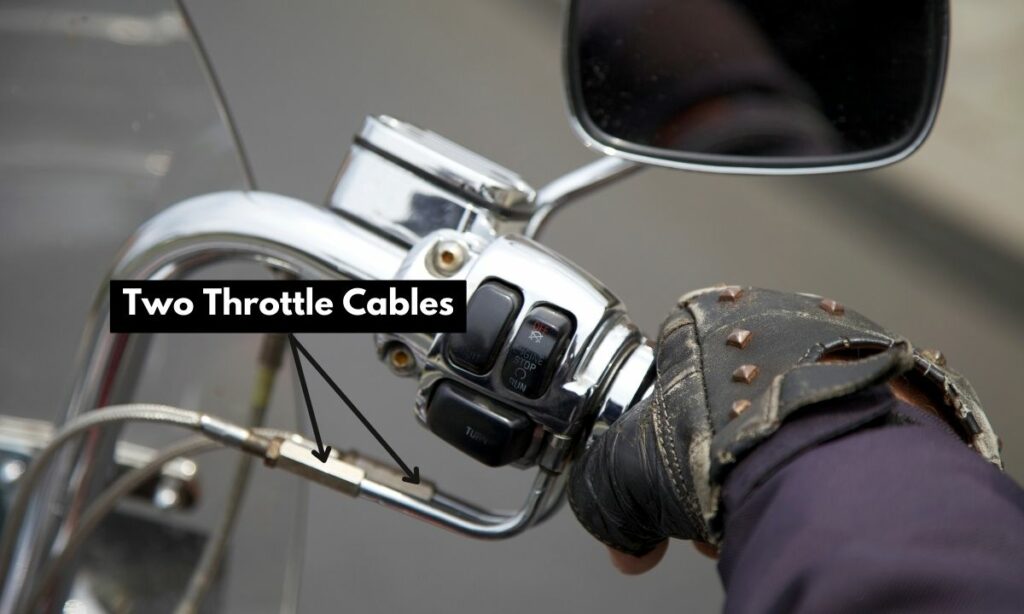
This is a normal setup in modern motorcycles.
Even in those motorcycles, adjusting the throttle cable is as same as above.
You need to find the locknut and tighten it.
While there are two throttle cables, the number of locknuts varies depending on the model.
Few motorcycles will have only one locknut in one of the cables. Whereas the other few will have one locknut in each of the cables.
Irrespective of how many locknuts are there, tighten each locknut. Most of the time, tightening one should more than suffice.
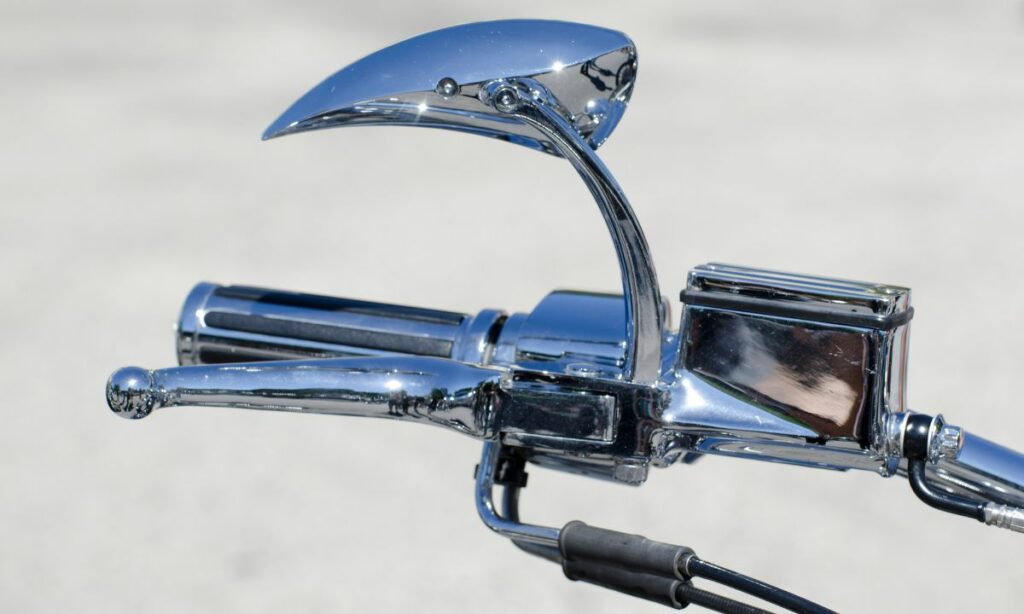
So, a motorcycle having two throttle cables changes none of the above steps. Follow the same procedure to adjust the throttle free play.
FAQs
The throttle cable in a motorcycle should be tight with a free play of 2 to 3 mm.
Anything more than that is not desirable. And the throttle cable should be tightened to prevent poor acceleration.
If the throttle cable is loose, there will be a lag between the time the ride rolls up the throttle and the motorcycle responds to it.
This is because the rider needs to roll the throttle more to account for the slack and the tension to kick in. Only then the carburetor and the throttle bodies begin to open up.
As a result, the motorcycle ends up having poor pickup and poor acceleration.
There needs to be a slight amount of slack in the throttle cable. Most motorcycle manufacturers recommend a slack of 2 to 3 mm.
